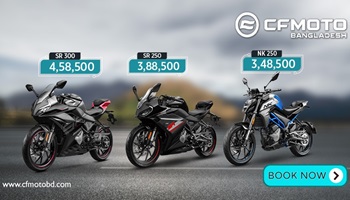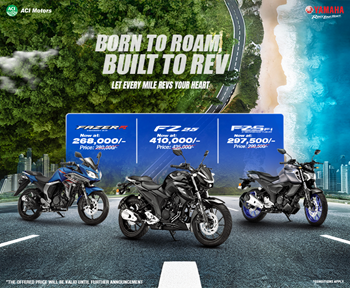What is the 4 Stroke Engine?
What is meant by 4-Stroke Engine? How does a 4-stroke engine work on a bike? What is a 4-stroke vs 3-stroke engine? How many revolutions are in a 4-stroke engine? What are the advantages and disadvantages of a 4-stroke engine? This content will reveal details about a bike’s 4-stroke engine.
What is 4 Stroke Engine in Bike?
A four-stroke engine is an internal combustion (IC) engine. People also call it the four-cycle engine. In the process of turning the crankshaft, the piston finishes four separate strokes. The full travel of the piston along the cylinder refers to the term stroke. In this case, it counts the piston’s movement in either direction. The 4 cycles are intake, compression, combustion/power, and exhaust.
What is the Working Principle of a Four-Stroke Engine?
Here is the complete process of the working principle of a 4-stroke bike engine.
Intake
The terms like induction or suction are also the same. Generally, this cycle starts at the top dead center (T.D.C.). Meanwhile, the stroke finishes at the bottom dead center (B.D.C.). The intake valve stays in the open position. It generates a partial vacuum (negative pressure) in the cylinder thanks to its downward movement. In this process, the piston indeed pulls an air-fuel mixture into the cylinder.
Compression
When the intake stroke finishes, it begins at the B.D.C. Then it comes to an end at the T.D.C. The piston compresses the air-fuel mixture in this 2nd cycle. It actually prepares for the ignition during the next stroke (power). In this stage, the intake and exhaust valves, both stay closed.
Combustion
This 3rd cycle is also called power or ignition. It begins the 4-stroke’s 2nd revolution. Because, when the process reaches this stroke, the crankshaft has already finished a 360-degree revolution. Either a spark plug (in a gasoline engine) or high compression-produced heat (in diesel engines) ignites a compressed air-fuel mixture. The piston returns to B.D.C. With the help of mechanical procedures, this stroke turns the crankshaft on.
Exhaust
You may also know it as the outlet stroke. This is the ultimate cycle of the 4-stroke engine and the piston returns from B.D.C. to T.D.C. Exhaust valve stays open. The used air-fuel mixture is pushed out via the exhaust port.
Advantages of 4-Stroke Engine
The benefits of a 4-stroke engine on bikes:
- Offers higher levels of torque at a lower RPM.
- Consumes fuel once every four strokes. Thus it is very much fuel efficient.
- They don’t require oil or lubricant mixed in the fuel. Thus they cause less pollution and also is much environment-friendly.
- Comes with a longer lifespan. They can work finely even after much wear & tear.
- With the production of less noise and vibration, this engine type is more user-friendly.
Disadvantages of 4-Stroke Engine
The cons of this sort of engine include:
- They are heavier due to more number of components.
- As they feature more parts and valves, the maintenance and repair are more costly.
- The maintenance is also a bit complicated. Also, it requires maintenance at regular intervals.
- One may feel it is a less powerful design because it receives power once every 4 rotations of the piston.
What is the difference between 4 stroke & 2 stroke engine?
| 4-Stroke Engine | 2-Stroke Engine |
| Operates in 4-stroke: Intake, Compression, Power, & Exhaust. | Works in 2 strokes: Upstroke (ignition & compression) & Downstroke (power & exhaust). |
| To complete a power stroke, it goes through four stages or two complete revolutions. | To finish the same task, this engine goes through 2 stages or one complete revolution. |
| It has more weight and also needs more space. | It weighs less and requires less space. |
| The engine comes with a more complex design. | Features simpler engine design. |
| Able to yield higher levels of torque at a lower RPM during operation. | The 2-stroke engines can’t match the higher torque generation ability at a lower RPM like its counterpart. |
| Doesn’t only consume less fuel relatively but also gives off less pollution. | Comparatively consumes more fuel and also causes more pollution to the environment. |
| More durable and also withstands more amount of wear & tear. Also has a longer lifespan. | It has a shorter lifespan and can’t stand as much wear & tear as its counterpart. |
| Generates less noise and vibration during operation. | Produces more noise and vibration during operation. |























